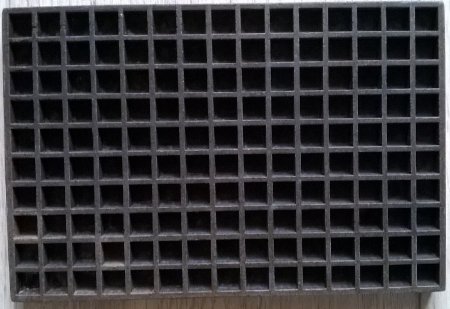Object ID:
2016.6.3
Title:
Martin Cubarithm Slate
Description:
(a) dark brown gridded rectangular tray cast from a resin infused with wood fiber; 15 x 10 grid; bottom of each slot has a slight shelf around the edge to allow the types to lay square in the hole; (b-f) five (5) cubes cast from printer's type-metal with five braille symbols and a dash cast into the faces.
Dimensions:
H-5.188 W-7.75 D-0.563 inches
Date:
ca. 1930
Made by:
Institut National des Jeunes Aveugles
Place of Origin:
Paris, France
Provenance:
The cubarithm was originally invented in 1886 by Alphonse Oury, a blind piano maker and former student of the Institut National des Jeunes Aveugles in Paris. By rotating the cubes, nineteen numbers, symbols, and operators could be represented. (See file for a key.) The Oury cubes were originally carved from wood. Emile Martin, director of the school, and Thomas Mattei, a math teacher there, began testing different materials and designs. By 1888, they had finalized the design, using lead alloy cubes with the symbols cast in their sides, and adding a recession at the bottom of each compartment to allow the cubes to rest flat. Mattei wrote in 1890, "In one hour they [the students] are learning numbers; and in two months they are working with all four operations."
Credit Line:
Gift of Mireille Duhen, 2016.6.
